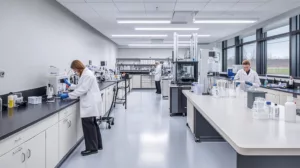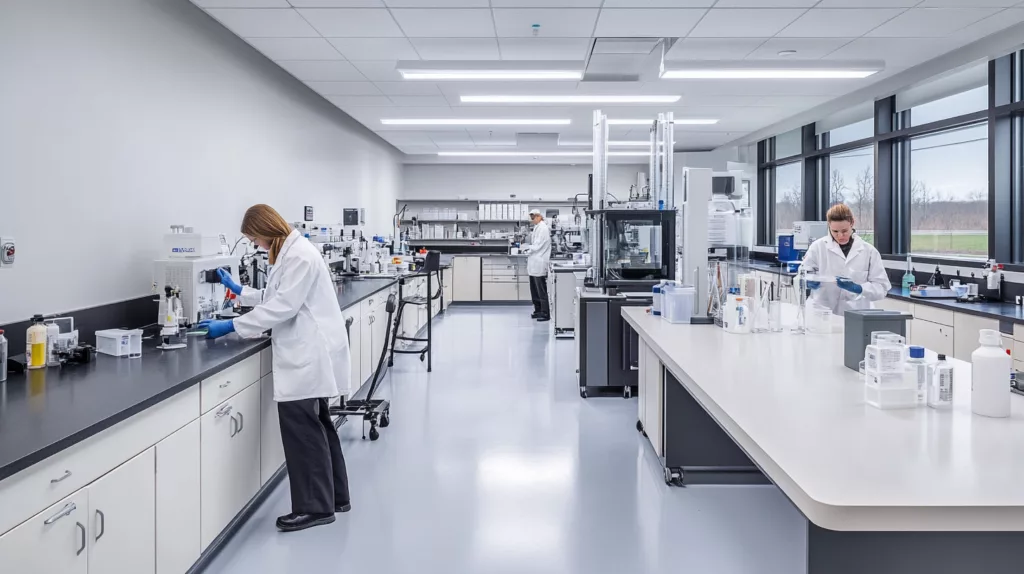Adhesives are a broad category of substances designed to bond materials, while super glue is a specific type of adhesive known for its quick-setting and strong bonding capabilities. Although they share the common goal of adhering surfaces, their properties, composition, and applications vary significantly. Understanding these differences will help you choose the right product for your project.
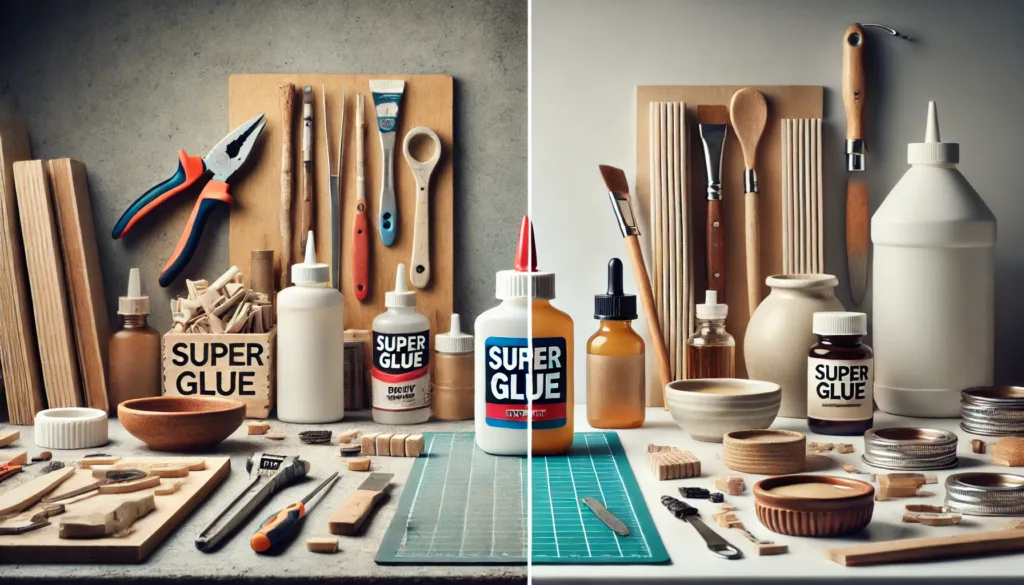
Defining Super Glue and Adhesive

What is Super Glue?
Super glue, scientifically known as cyanoacrylate adhesive, is a fast-acting, high-strength adhesive that bonds instantly when exposed to moisture. Its unique chemical formulation makes it ideal for precise applications and quick fixes.
- Key Characteristics:
- Instant bonding
- Strong adhesion to a wide range of materials
- Typically used for small-scale repairs or crafting
- Common Applications:
- Fixing broken ceramics, plastics, and metals
- Bonding small, intricate parts in crafting or modeling
What is Adhesive?
Adhesive is a general term that refers to any substance capable of holding materials together by surface attachment. This includes a vast range of products, from pressure-sensitive tapes to industrial-grade epoxies.
- Key Characteristics:
- Varied formulations for different applications
- Includes liquid, paste, tape, and spray forms
- Typically slower to set compared to super glue
- Common Applications:
- Construction and carpentry
- Automotive and aerospace industries
- Packaging and labeling
Differences Between Super Glue and Adhesive
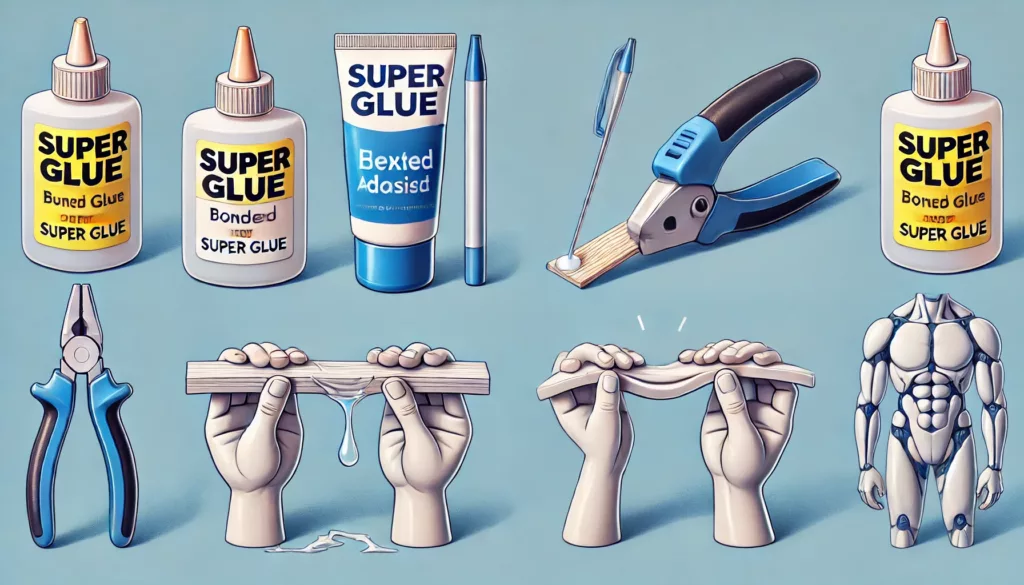
1. Composition
- Super Glue: Made primarily of cyanoacrylate monomers, which cure rapidly when exposed to moisture.
- Adhesive: Can be composed of natural or synthetic materials, including epoxies, polyurethanes, silicones, and acrylics.
2. Setting Time
- Super Glue: Sets within seconds to minutes, ideal for quick fixes.
- Adhesive: Varies depending on the type; some adhesives require hours or even days to cure fully.
3. Strength and Durability
- Super Glue: Provides strong initial bonding but may become brittle over time under stress or extreme conditions.
- Adhesive: Often designed for long-term durability and resistance to environmental factors, such as heat, moisture, and UV rays.
4. Application Methods
- Super Glue: Applied directly from a bottle or tube in small quantities for precision.
- Adhesive: Available in various forms, including sprays, cartridges, and tapes, for larger-scale applications.
5. Surface Compatibility
- Super Glue: Works best on non-porous surfaces like metal, plastic, and glass.
- Adhesive: Formulated for a broader range of surfaces, including porous materials like wood and fabric.
Choosing the Right Option for Your Project
When to Use Super Glue
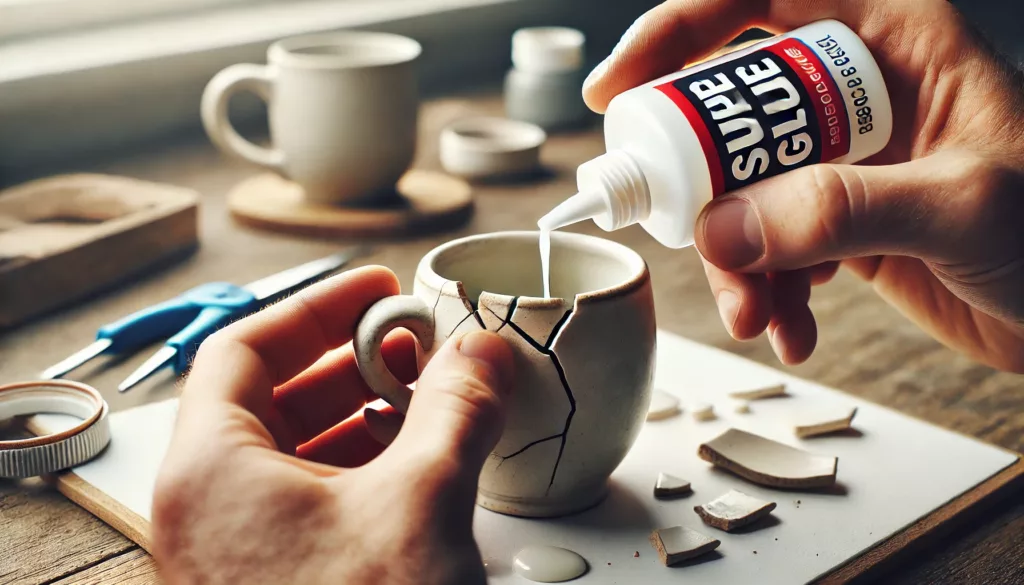
- For quick fixes or emergencies.
- When working on small, intricate repairs.
- For materials that don’t require flexibility after bonding, such as ceramics or hard plastics.
When to Use Adhesive
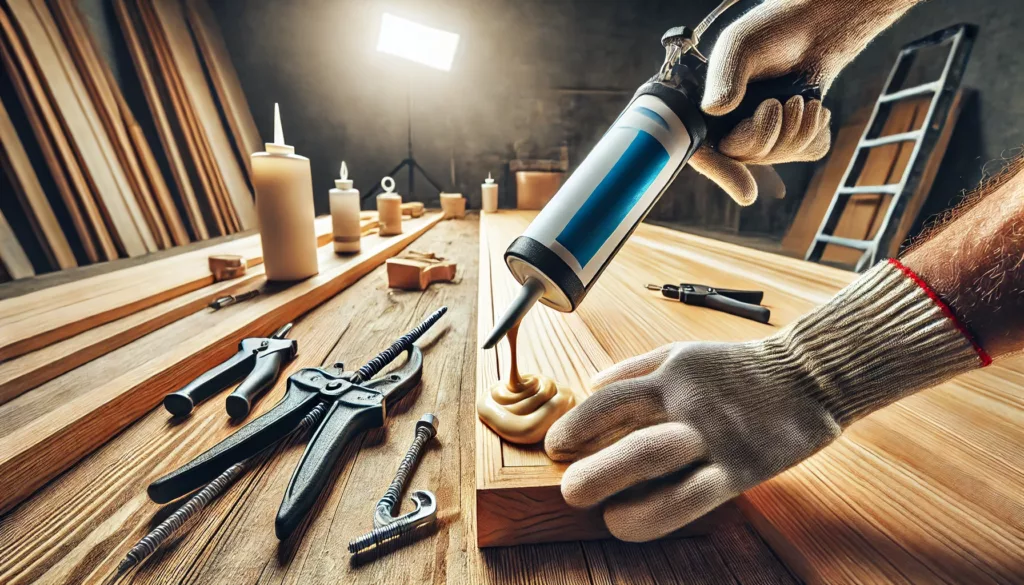
- For larger projects that require structural integrity, such as woodworking or construction.
- When bonding materials exposed to harsh conditions, like outdoor repairs.
- For surfaces where flexibility or elasticity is required.
Advantages of Super Glue
- Quick setting time saves time in repairs.
- High strength-to-volume ratio allows for efficient use.
- Bonds a wide variety of non-porous materials.
Advantages of Adhesive
- Versatile formulations for a wide range of projects.
- Better for long-term durability and exposure to stress.
- Available in forms suitable for different applications, from tapes to industrial epoxies.
FAQs
What makes super glue bond so quickly?
Super glue’s cyanoacrylate formula reacts with moisture in the air or on surfaces, initiating a rapid curing process.
Can super glue be used for large-scale projects?
Super glue is better suited for small, precise applications. For larger projects, other adhesives like epoxies or construction adhesives are recommended.
Are adhesives stronger than super glue?
It depends on the type of adhesive. Industrial-grade adhesives can outperform super glue in strength and durability, especially under stress or extreme conditions.
Is super glue waterproof?
Some formulations are water-resistant, but it’s not entirely waterproof. Special adhesives are designed for underwater applications.
Which is more flexible, super glue or adhesive?
Adhesives, particularly polyurethane or silicone-based ones, are more flexible than super glue, which tends to be brittle.
Can super glue bond porous surfaces?
Super glue struggles with porous surfaces as it requires moisture to cure. Adhesives with fillers or thicker formulations are better suited for such materials.
Conclusion
The primary difference between super glue and adhesive lies in their composition, setting time, and applications. Super glue is perfect for quick fixes and precise repairs, while adhesives offer versatility and durability for larger, more complex projects. By understanding these distinctions, you can confidently choose the right product to meet your bonding needs.




